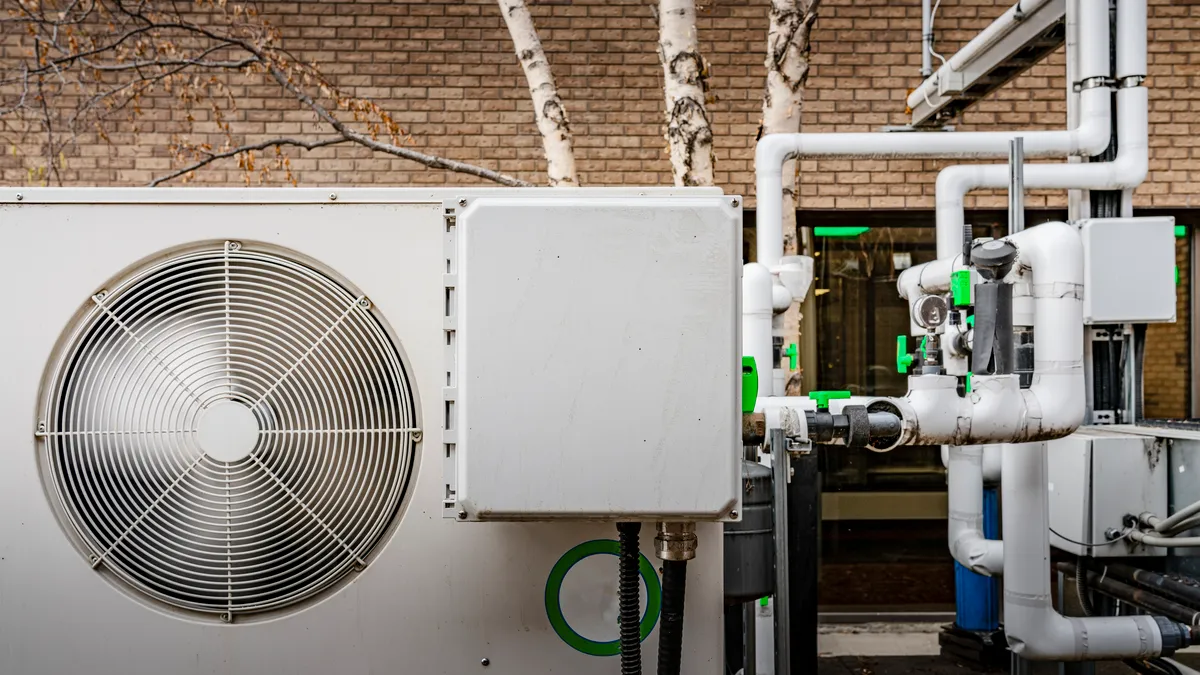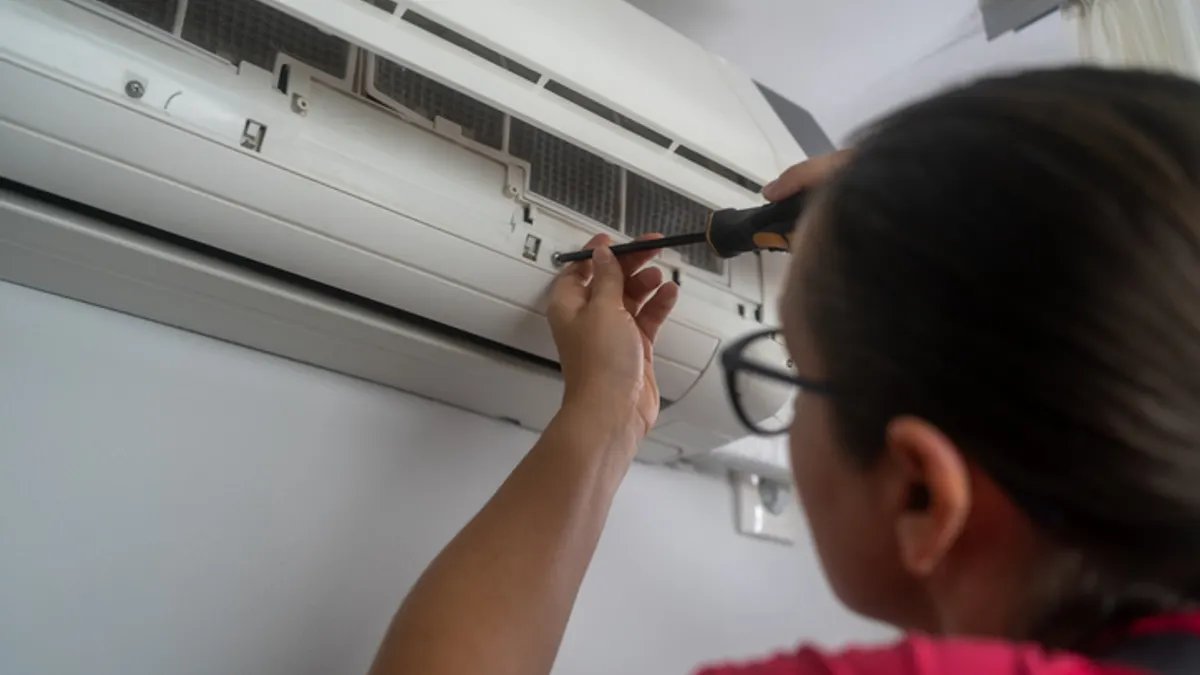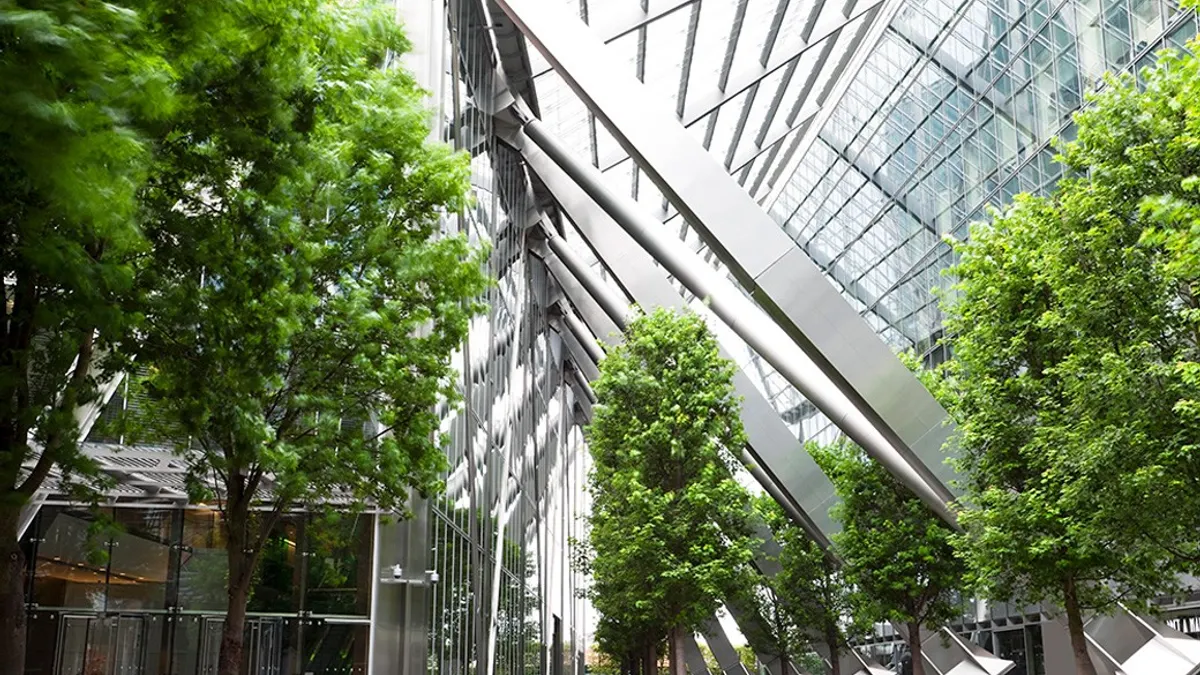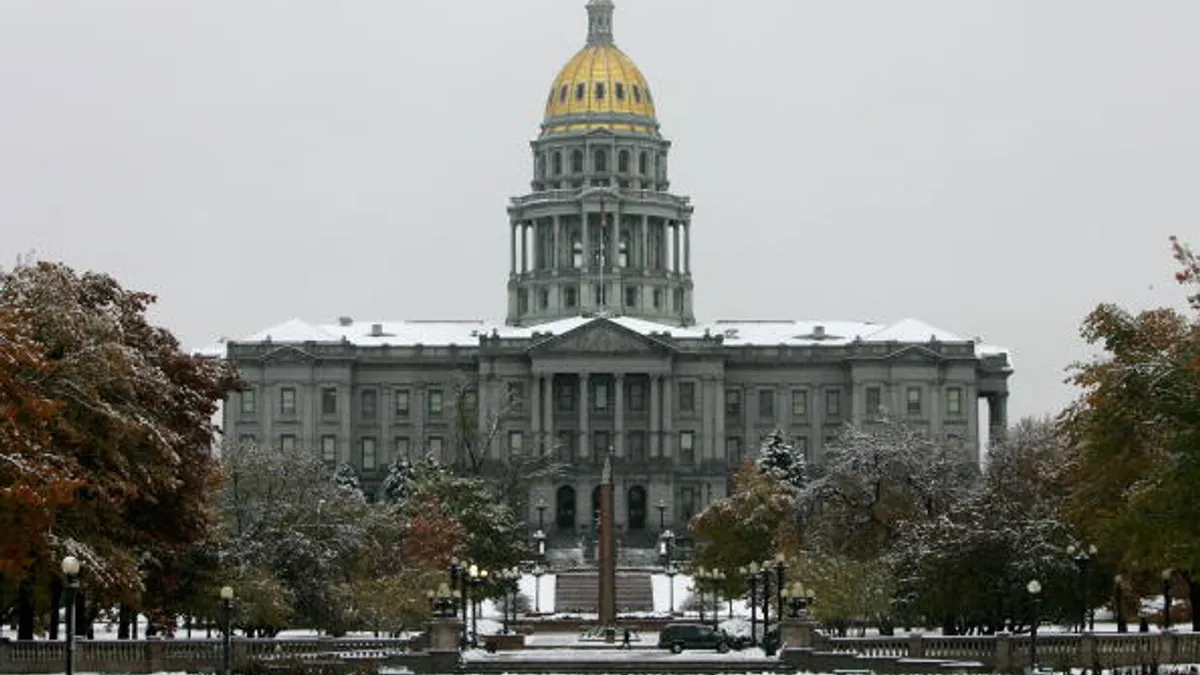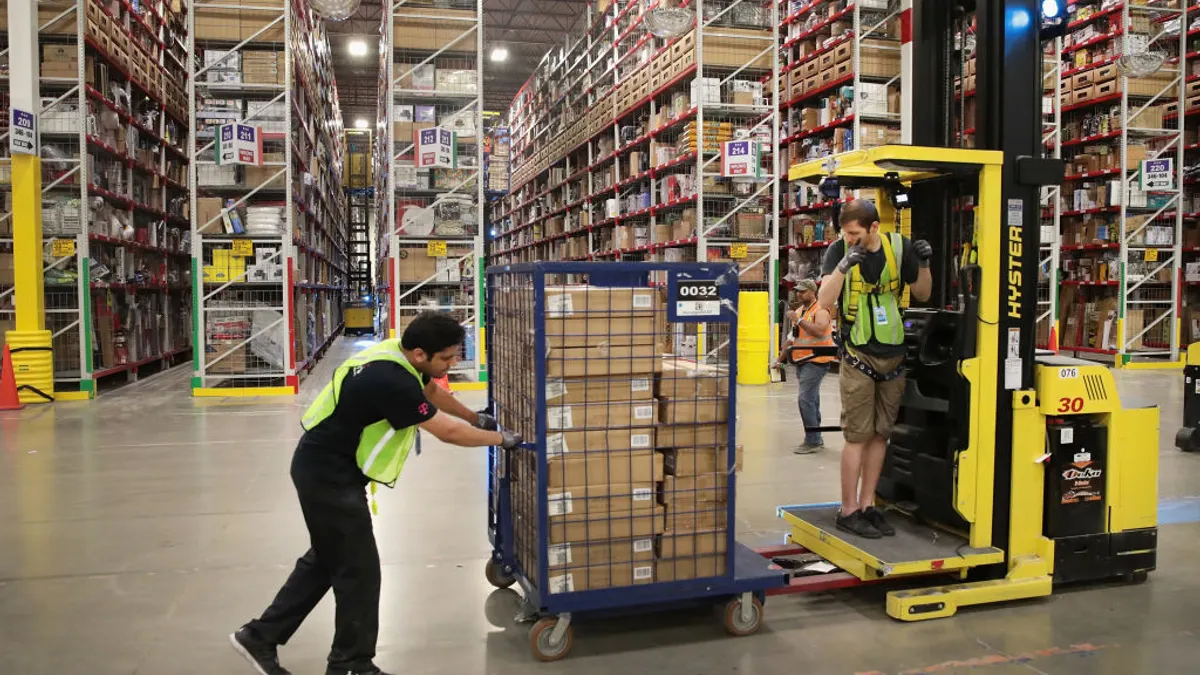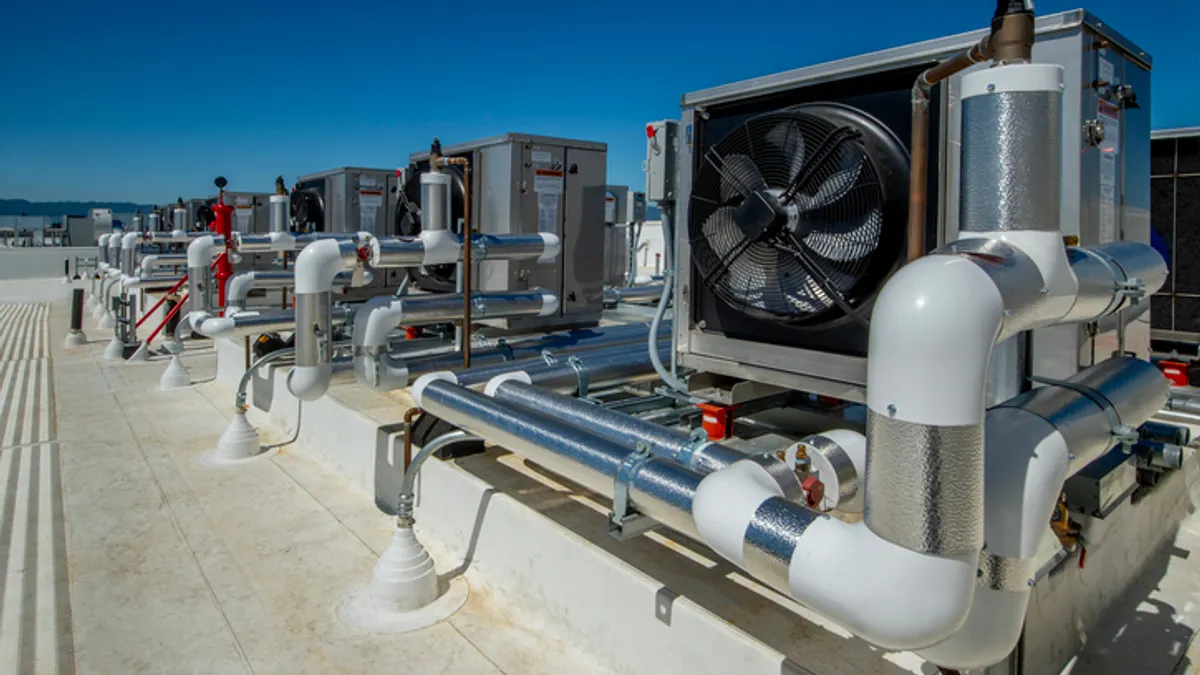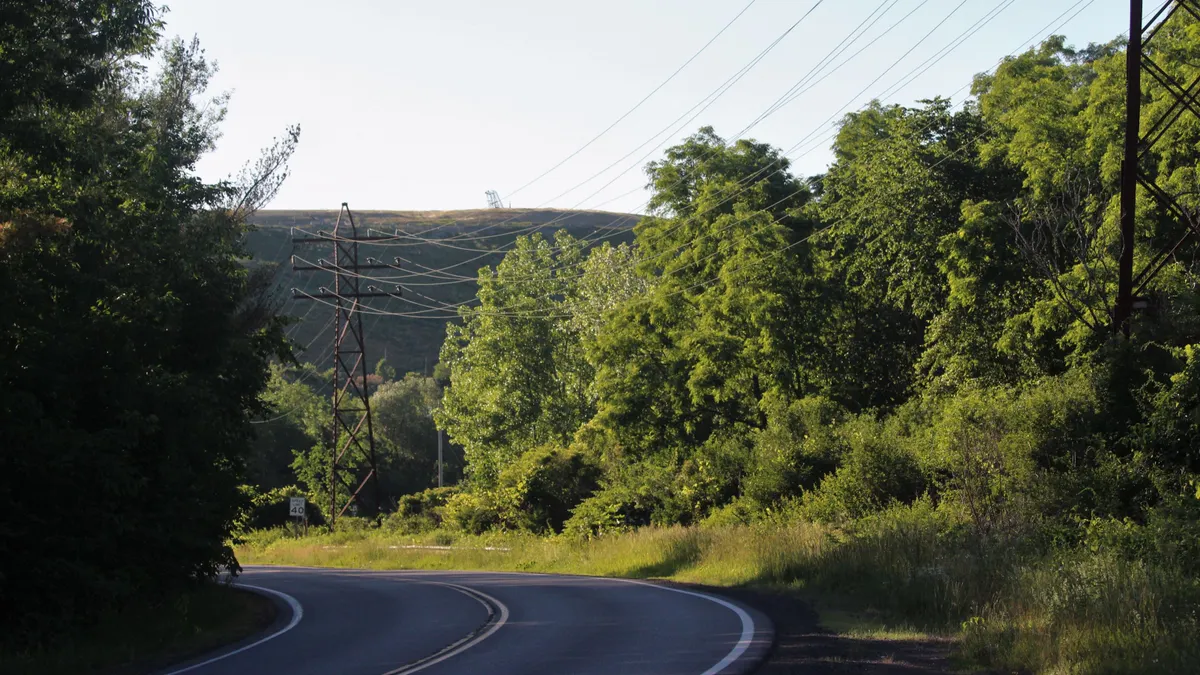Heat pumps can be used to heat any building in the U.S. today, thanks to advancements in the technology, but workforce training issues and lingering concern over their use in cold weather remain barriers to adoption, says Ian Shapiro, professor of practice of mechanical and aerospace engineering at Syracuse University.
“There [are] old worries,” Shapira said in an interview. “Forty years ago, we had single-speed heat pumps that could not keep up in the cold weather, and I think we’re still paying the price for that bad experience…. There [are also] issues with fossil fuel companies and utilities spending a ton of money because they don’t want to give up their sales of oil and gas.”
Although adoption is growing, thanks to the role of heat pumps in improving building efficiency and reducing emissions, fewer than 15% of U.S. commercial buildings have the systems, according to a fact sheet by the U.S. Department of Energy’s Commercial Building Heat Pump Accelerator, which is working to bring new equipment to market through 2027.
Thanks to advancements like variable refrigerant flow, though, made possible in part by the DOE’s Commercial Building HVAC Technology Challenge, it’s possible today for any building to electrify heating and cooling systems with heat pumps, he said.
Variable refrigerant flow, or VRF, has become one of two workhorses that commercial facilities rely on, Shapiro said. The other is packaged rooftop heat pumps.
VRF air-conditioning equipment is configured as a split system that incorporates a single refrigerant circuit, one or more outdoor units, at least one variable-speed compressor or an alternate compressor combination for varying the capacity of the system, and multiple indoor fan coil units, each of which is individually metered to operate independently in response to multiple indoor thermostats, according to the DOE.
Packaged rooftop heat pumps, with refrigerant included, are relatively straightforward to install, Shapiro said, “unlike split systems where the technicians need to know how to [add] refrigerant.” These systems are effective for large retail or single-story commercial story buildings, like department stores and supermarkets, he said.
“I can heat any building in the U.S. with a heat pump, with no backup and no problems at all, because today they make them variable speed,” he said. “So, they speed up when it’s cold outside, and they make them so they can operate down to very low temperatures, way down below 0 degrees Fahrenheit.”
He estimates there are more than 100,000 heat pumps in use in New York, where temperatures can get extremely cold, and a report by Syracuse University anticipates more growth in the region as fossil-fuel powered energy becomes more expensive.
Old worries
But the systems remain burdened by legacy issues, particularly on the residential side, he said. Much of the effort to grow adoption of heat pump water heaters has been focused on residential markets, but market penetration remains small.
“There are a variety of challenges,” he said. “Part of that is supply. I think the manufacturers will fill any supply, but the contractors are still getting used to the equipment, so there’s a workforce issue.”
Workforce issues are expected to be a challenge in New York, where the government is trying to rapidly transition buildings to heat pumps. It has enacted requirements for new buildings to use electric heat and appliances by 2026 and all existing buildings by 2030. But lack of training and education in the systems could become an impediment, he said.
“We need education for building owners and facility managers. The facility manager of the future needs to be able to talk heat pumps. If they say ‘It’s got to be gas’ or ‘It’s got to be oil,’ they’re going to find themselves left behind,” Shapiro said. “They need to develop conservancy and comfort with heat pumps, and that includes the strengths … and the weaknesses.”
The industry also needs more contractors, but Shapiro believes demand will help fill that gap. “I’m not worried about them. They will come along, [because] there’s a big business opportunity,” he said.
One way Shapiro is working to solve that issue is by leveraging a DOE grant for commercial building energy audits that will help technicians boost familiarity with heat pumps and electrification, he said. The program can help students to identify various sources of applied energy losses, like those that can occur during the design, installation or operation phase of a heat pump system that can reduce its efficiency, said Sameeraa Soltanian-Zadeh, a Ph.D. candidate in mechanical and aerospace engineering at Syracuse University.
The 14-week program includes lectures and field work that helps students conduct energy audits to determine energy savings opportunities. In the future, Shapiro also hopes to offer a 2-week intensive training that can be completed during the summer, he said.
“I was in a meeting with the DOE and they said the current White House is still planning to continue many of these programs, because they want to reduce energy costs in people’s pockets. Those were the words they used,” Shapiro said. “Everyone is interested in reducing what they have to pay in their monthly bills, whether you’re a homeowner or a factory.”


